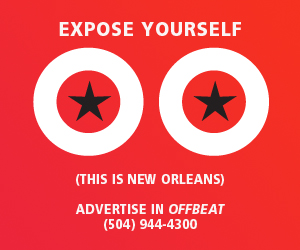Bet that image got your attention, didn’t it?
Had a conversation with a friend this morning, discussing what works best in media. We came to the conclusion that readers aren’t as discerning as they used to be, or could be. They want to be told what to do.
I suppose this is possibly a factor of the herd mentality, or maybe just the human brain. Humans love lists. There are myriad reasons why, and “listicles” on the web are common fodder for quick easy reader consumption.
There’s so much information out there now on the web, that backlash on information overload makes a list easier than trying to sift through all the various forms of information out there.
Cranking out lists has also created a massive number of “writers” whose opinions in blogs and reviews now seem to carry some weight. Just because they’re published on the web. Pretty pitiful that people will believe anything they see on the internet. I’m not implying that all lists are unreliable. Some are based on actual surveys, critical reviews, voting. Most are BS. There are entire websites that are now based purely on lists.
Which brings me to the subject of this week’s rant.
According to the American Press Institute, “Journalism is the activity of gathering, assessing, creating, and presenting news and information. It is also the product of these activities. Journalism can be distinguished from other activities and products by certain identifiable characteristics and practices that not only separate journalism from other forms of communication, they are what make it indispensable to democratic societies. History reveals that the more democratic a society, the more news and information it tends to have.”
Then there’s the difference between journalism and artistic criticism: criticism is an analysis of the artwork, and journalism has to include factual reporting and the removal of human bias, wherever possible, from the written piece. In other words, journalism is supposed to be objective and non-biased.
Then there’s advertorial: a newspaper or magazine advertisement that gives information about a product in the style of an editorial or objective journalistic article. In other words, the reader is beguiled into believing that an advertisement is objective and journalistic.
And then, there’s the “list,” many of which have backstories that are intrinsically related to advertising. So the question is how can anyone know what’s good information that’s trying to be objective, and what’s information that’s influenced by advertising…they use to call it payola.
More, and more, what you think is journalism is payola. There’s a ton of money to be made by media when they publish stuff that looks like journalism but is really paid for. And there’s even something called native advertising which is product placement on the internet that is disguised as editorial.
I’m in the business, so I’m pretty aware of this chicanery, but most people are not. What’s scary to me is that too few perceive this editorial sleigh-of-hand exists, and that the notion of editorial integrity almost doesn’t exist any more.
For example, I’ve found over the years that it makes no difference if a restaurant receives a “best of” designation from unreliable (read advertorial) media. The restaurant doesn’t care. It just wants ink. Ditto reviews online (how many restaurants do you think plant reviewers on yelp to give glowing reviews for a place that sucks? The answer is probably a lot.)
So how does one determine whether a media’s recommendation is reliable or not?
Does Joe Blow’s Burger Joint have the best burger in town because its yelp reviewers say so?
Probably not. And just because Joe Blow’s appears as the top burger joint in ABC Media’s “Best of” list, does that mean that Joe’s is all it’s been touted as. Probably not…unless you can discern that ABC Media has a reputation for authentic critical and honest reviews.
I was reminded of this at a meeting last night when I heard one of the attendees recommend that a business owner buy advertorial (not an ad) in an upcoming local publication’s upcoming issue.
Sorry, I’m old-school. If I could tell you the number of times OffBeat sales reps have been told that if we’d write about a CD, performer, or event that we’d get an ad out of the deal. That’s pay-for-play; that’s payola. (By the way, payola is forbidden by the FCC. Nothing like that exists for print, and certainly not on the internet).
It’s not fair to our readers to create advertorial and to pass it off as journalism or valid criticism. That’s an advertisement, and it should be marked as such. But then, you see, the promotion loses (or should lose) credibility. It’s not really true.
I’ll give you a recent example. We wrote about a musician a few months back in a feature story. The musician had a new CD coming out. The musician’s manager called me to buy an ad in the next issue. The CD was reviewed, but the review was not so good. Guess what? The manager cancelled the ad. I get it; we lost revenue, but at least OffBeat retained its credibility and integrity. It’s happened before, many times, actually. At least I can live with myself and know we did the right thing by the musician.
I think the issue is that we now have a population base of readers who are clueless and/or indifferent to journalism and payola. It’s sad, but it’s also created a population of that can’t tell the difference between what’s valid and true and what is pure BS. Thus, as a good example, our slate of presidential candidates. Clinton, Trump, Stein or Johnson. It’s the media’s fault. But then it’s the public’s fault for buying into the media’s bullshit.
How do you react when you see a list in the media?




